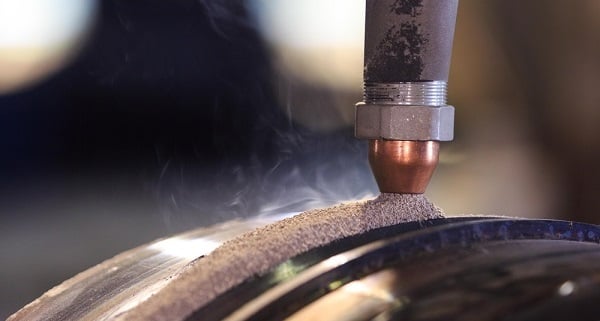A unique and specialised welding process, submerged arc welding (SAW), is a key process in the fabrication of a variety of industrial components.
What is submerged arc welding and how does it work?
Submerged arc welding is an arc welding process whereby the arc is “submerged” in a layer of granular flux, while the bare welding electrode performs the weld.
The layer of flux creates a protective environment from atmospheric contamination, while the weld takes place.
As well as preventing sparks, spatter and supressing the UV radiation and fumes associated with the arc welding process.
The flux becomes conductive when molten, allowing the current from the arc of the electrode through.
Process information.
Sub-arc welding is normally a mechanised or automatic process, however it can be done semi-automatically by hand also, by means of a pressurised or gravity flux-fed delivery system.
Correct input of parameters is vital to achieve desired results, as the weld pool is not visible.
Current, arc voltage and travel speed all affect quality of the bead, chemical composition and penetration depth so great care is needed to get the parameters right to avoid costly mistakes.
Completed with either an AC or DC current, the submerged arc welding process is often a single wire application.
However there are ways to increase productivity by means of increased deposition rate and travel speed, improved bead quality.
These include the use of multiple wire operation (twin wire feed, tandem systems), addition of metal powder and use of tubular wire.
Due to the fluid nature of the weld pool produced, molten slag and loose flux, welding is usually carried out in the flat or horizontal position.
Therefore, it is an ideal process for longitudinal butt and fillet welds, as well as circumferential welds when the weld head is fixed with something like a column and boom.
The workpiece is then rotated slowly by use of a welding manipulator, like a positioner or pipe rotators. Multiple passes can be carried out using this method, meaning there is virtually no restriction on material thickness if the correct weld preparation techniques have been used.
The below video from Miller highlights a great case study from moving onto automated submerged arc welding from manual arc welding.
Equipment required.
Equipment required for the submerged arc welding process includes appropriate power source supply (correct current requirements).
A wire feed system and weld head, control unit (if mechanised/automated application) and suitable handling equipment.
These include welding manipulators, weld head carriers etc. to perform the process to job specific requirements.
Finally the required flux and wire combination to achieve the desired result.
We have a large stock of equipment and machinery for sub arc welding and export worldwide, click here to view current availability.


comments
where is Malusi
We found this British company in Wales looking for 2 SMAW qualified staff.
Our client is a world leader in the design, manufacture and installation of structural steel bridge systems. They have a long & successful history and the business is continuing to expand with its operations all over the world.
http://www.britishjobs.uk.com/north-wales/engineering/jobs/submerged-arc-welder-106783.htm
Great salary and prospects.
Im looking for a job as a sub-arc welder
Hello Malusi
We supply sub-arc equipment – we do not have any jobs for welders here.
Post your details on our Facebook page and see if you get any of our customers offering you a job.